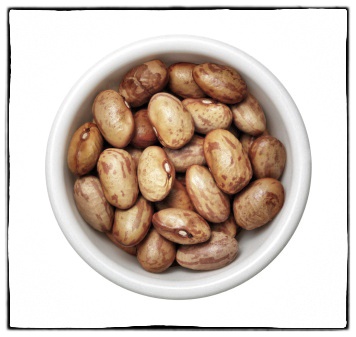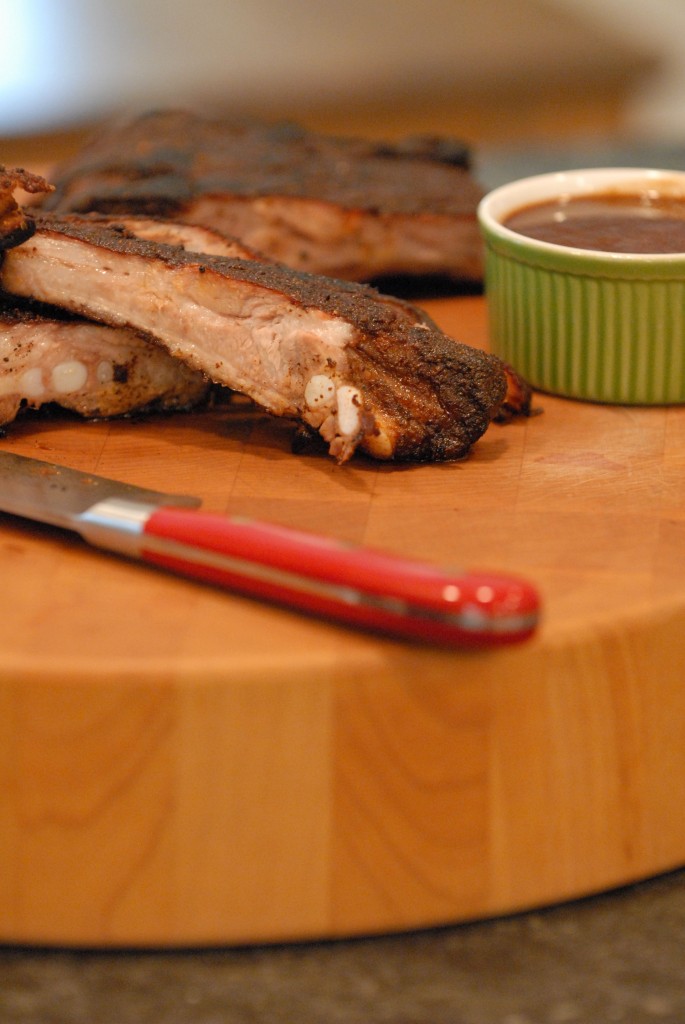Now that I’m closing in on the publication date of Poor Man’s Feast (March 5th…good heavens), I’m also talking to a lot of people who want to know (usually in a snapshot of just a couple of seconds!) what, exactly, the book is about. It’s not easy to distill two years of writing, a year of editing, and a lifetime of taking notes (both mental and not) into the blink of an eye, and so I’ve spent a lot of time thinking about this story — what this story is, who and what it’s about — and the best that I can manage to come up with is this: it’s about growing up at odds with the concept of simplicity in all its meanings and measures — but certainly gastronomically — and being transformed by compassion, hunger, and love.
My beloved dad, who I wrote about long before I lost him in 2002 (and copiously since) was, for many years, a very big believer in the power of fancy: fancy stuff, fancy life, fancy food. It’s probably in part what brought my parents together, since my mother believed in it too, and to a large degree still does. Every Saturday morning when I was a child, my mother would go out to the beauty parlor to have a touch-up, and my father would squirrel me away for a secret, fancy lunch someplace in Manhattan, just the two of us.
I mean fancy fancy, like Cote Basque fancy. Or, early on, Le Pavillon. There was one place on West 46th Street that had upholstered pink silk dupioni walls. Weird fancy.
It wasn’t always a great idea, necessarily: it was the early 1970s. Business wasn’t good anywhere. But it was important to him nonetheless, and I looked forward to our clandestine lunches with a certain amount of yearning. Not at all in a Nabokovian way, mind you. It’s just that when a young girl is spirited away for secret lunches with her dad that wind up being one part education (he mysteriously knew the names of all the mother sauces, and what turned an Espagnole into a Bordelaise. Why did he know this? I still have no idea.), one part undivided attention, and one part covert operation (my mother was never supposed to know that we were luxuriating over gigantic French calorie bombs while she was out having her color done), the world for her is suddenly perfect, even if it’s not.
Years later, after the divorce, he met the love of his life, Shirley, who was and remains a staunch believer in the complete opposite of fancy: getting past and beneath the pretty and safe surface of things (which makes sense; she’s a shrink) she finds little value in ornament, psychic or otherwise. The (mostly vegetarian) food that she eats is often plain, but simple, and good. That was how she cooked for him — and the way she still thinks about things generally speaking — and in the twenty years they were together he became happier and healthier than he’d ever been before, thanks to her: his life had become simple, and with that simplicity came a hard-won peace. The fancy stuff was still there from time to time, but only when appropriate. He knew he was loved — fancy or not — and so his life and what he chose to surround himself with, ultimately, was simple. And that included the unfettered, quiet food that he came to love.
My story runs parallel to my father’s; it took me years — thirty-six of them — to find the person who would become my spouse. When we met, I was fancy; she was not. I cooked annoyingly twee and tall food that I tortured into noisy verticality whenever I could; my prized possessions included eight timbale molds and a kitchen blowtorch. Susan made perfect poached eggs and served them to me on white toast. The first time she did it, I watched with rapt attention: she didn’t use any of the contraptions that stores sell for poaching — you know, the little silver egg trays that look like tiny soap dishes, that you’re supposed to lower into the simmering water, or the special pot with the separate egg compartments, or those little green silicon egg cups. She used a battered Revere pot, an egg, and the back-end of a wooden spoon. It’s almost fourteen years later, and the way I think about food and life — what’s important, what’s not, and why comfort and simplicity are the best revenge and can often be found in the most unexpected of places — has changed forever, and it’s largely because of Susan, her quietness of spirit, and the way she deals with the world around her. Including me.
But the funny thing is that the concepts of simple and peaceful have recently become seriously commodified: look all over Pinterest, and you’ll see ostensible simplicity everywhere— spaces shoehorned into bare-bones minimalism, and painted in monochromatic palettes. A crop of new, wonderful print (imagine that!) magazines — I’m totally hooked on this one and this one and this one — are laden with gorgeous, de-saturated photography promising calm and serenity. Basic, elemental dishes — beautiful heirloom beans drizzled with a bit of really good olive oil — served in chipped coffee bowls, are ubiquitous. And they’re a pleasure to see; they accurately represent the way we cook in our home. Still, I sometimes worry that commodified simplicity will become fetish, and ultimately an over-stressed trend. I’m not sure what I can do about that. Trends evolve, but one thing is for sure: it says a lot that so many of us aspire, long and hard, for peace and placidity in our lives.
As for us, all we can do is keep it real in our house, and in our kitchen. And that’s what Poor Man’s Feast is about, ultimately.
A few weeks ago, a formerly very fancy, newly single friend called me to discuss an ingredient emblematic of simple, real food: the dried bean. She was finally beginning to appreciate the loveliness in a bowl of beans with a little olive oil, but had never made them for herself. She had a bag of them sitting on her kitchen counter. Should she soak them, or not. If so, should she do it at room temperature or in the fridge. Could she freeze them after she soaked them, or after she cooked them? Could she freeze them in their liquid, or not? Should she add an onion, or shouldn’t she. How about a bay leaf? Would a pressure cooker be better than a slow soak? She’d read something about the way Italians cook them in a glass bottle buried in the glowing embers of a fireplace. Where would she find embers? Someone once told her that adding salt would make them tough. She sighed heavily.
She sounded weepy, and completely exhausted. She was undone by these beans.
Listening to her, I realized that in the furious struggle to de-fancify her life, she was doing the exact opposite: she was succumbing to the noise. The fancy still had its grip on her.
Maybe, I said, you just haven’t met the right guy yet.
Erin Scott’s Simple Pleasure of a Pot of Beans
(adapted from Yummy Supper)
One of the fringe benefits of being a cookbook editor is that I get to be surrounded by remarkable recipes pretty much all the time. Most of them are very good, but some of them are complete game-changers, like Erin Scott’s beans. This recipe, which arrived as part of Erin’s manuscript for her upcoming Yummy Supper: 100 Fresh, Luscious, and Honest Recipes from a {Gluten-Free} Omnivore resulted in beans that were gorgeously creamy and flavorful; the addition of smoked salt is totally inspired. Make sure you use the best dried beans you can find; I prefer Rancho Gordo‘s Good Mother Stallard beans. Thanks, Erin!
1 pound dried beans
1 head garlic, cloves separated and peeled
1 dry bay leaf, or 1/2 teaspoon dried epazote
1 tablespoon smoked sea salt
Place dried beans in a medium saucepan, cover with cold tap water, add the lid, and let the beans soak overnight. (I soaked them unrefrigerated.)
When you’re ready to cook the next day, make sure that your beans are covered by at least 2 inches of water; there’s no need to drain the soaking water if it still looks clear—just pour in a little more if necessary. Bring the liquid to a boil, then turn the heat down to maintain a nice simmer. Skim off any foam that forms on the surface; once the foam subsides, add the garlic, bay leaf or epazote, and smoked salt. Partially cover the pot, and simmer until creamy and tender (but not mushy).
Serve them:
Warm, drizzled with olive oil and black pepper
Topped with a poached egg
Turned into a gratin dish with a couple of sausages, topped with breadcrumbs, and cooked until golden (aka Fake Cassoulet)






